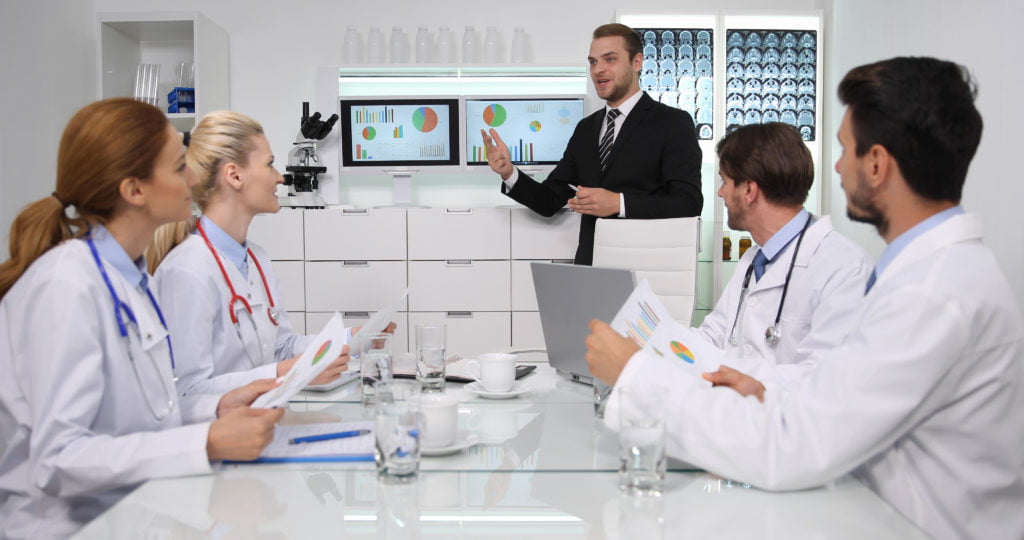Medical Administration Careers: Exploring Job Opportunities and Salaries
Medical Administration Careers: Exploring Job Opportunities and Salaries
Blog Article
Best Practices in Medical Management for Improving Performance and Lowering Expenses
In the ever-evolving landscape of health care, the search of best methods in clinical administration is critical for improving effectiveness and suppressing expenditures. By integrating sophisticated modern technologies such as electronic health and wellness records and telemedicine, healthcare carriers can simplify operations and boost individual treatment.
Leveraging Advanced Technology
In today's rapidly evolving medical care landscape, leveraging advanced technology is no longer optional however crucial for efficient medical management. The assimilation of electronic remedies into healthcare systems has transformed the method facilities operate, improving processes and improving individual treatment. Electronic Health Records (EHRs) are pivotal, providing extensive individual data that can be accessed instantaneously by accredited workers, therefore minimizing redundancy and decreasing errors. By streamlining individual info, EHRs get rid of the need for cumbersome paperwork and promote smooth interaction amongst health care suppliers.
Telemedicine is another technical development that has actually reinvented individual interaction. It supplies comfort for both patients and medical care experts by allowing remote consultations, which can decrease the need for in-person sees and optimize consultation scheduling. In addition, telehealth platforms can expand healthcare accessibility to rural or underserved locations, bridging spaces in care delivery.
Moreover, making use of Expert system (AI) and artificial intelligence is coming to be increasingly common in predictive analytics, permitting very early detection of possible health problems and even more enlightened decision-making. These modern technologies, when integrated successfully, can improve diagnostic precision and individualize patient treatment strategies, inevitably resulting in boosted health care end results and functional efficiency.
Optimizing Resource Allowance
Reliable resource allocation is vital for making best use of the efficiency of medical administration. By tactically handling sources such as employees, equipment, and financial resources, health care centers can dramatically boost their operational performance, improve client results, and minimize unneeded expenses. The primary step in enhancing resource allowance involves conducting a comprehensive assessment of current assets and identifying areas where resources may be underutilized or overextended. This analysis needs to be data-driven, making use of metrics and analytics to educate decision-making procedures.
Focusing on resource allotment based on individual needs and solution needs is vital. Applying versatile staffing versions can also enhance labor sources by readjusting personnel allowance in feedback to varying individual quantities.
Financial resources must be diligently kept track of and designated with strategic insight to sustain both temporary functional needs and long-term institutional goals. This consists of investing in training programs that boost staff proficiencies and embracing energy-efficient techniques that lower functional costs (medical administration). Ultimately, an optimized resource allowance approach fosters a sustainable health care atmosphere that is receptive, effective, and economically sensible
Streamlining Process Processes
When health care facilities aim to enhance functional effectiveness, enhancing operations processes becomes a pivotal focus. Efficient workflows minimize redundancy, remove unneeded actions, and enhance control amongst medical care specialists. This technique not just speeds up service delivery but also boosts the top quality of individual care.

Next, innovation integration try this plays a substantial role in streamlining operations. Executing digital health documents (EHRs) and computerized doctor order access (CPOE) systems decreases documents, reduces human mistake, and makes sure info comes to all pertinent workers. Additionally, leveraging telemedicine platforms can simplify individual consultations and follow-ups, minimizing the pressure on physical facilities.

Ultimately, streamlined workflows result in cost reductions and improved patient complete satisfaction, cultivating a much more sustainable healthcare environment.
Enhancing Information Monitoring
Structure upon structured process, optimizing data administration becomes a vital component ahead of time medical care management. Effective data management systems are vital for preserving precise patient documents, improving decision-making, and making certain conformity with regulative standards. By applying robust data monitoring remedies, health care facilities can boost the high quality of patient treatment while concurrently decreasing functional expenses.
One key facet of improving information administration is the integration of innovative electronic health and wellness record (EHR) systems. These systems assist in the seamless exchange of person information throughout various departments, minimizing duplication of tests and go to my site decreasing errors. A properly designed EHR system supports information analytics, enabling health care companies to recognize patterns and make educated choices relating to patient care.
In addition, securing patient data is extremely important. Adopting detailed cybersecurity actions, including file encryption and normal audits, guarantees the stability and discretion of sensitive info. This not just protects people but likewise keeps the institution's reputation.
Investing in staff training is one more essential factor. Educating health care experts on information monitoring practices enhances their capability to successfully make use of modern technology, leading to enhanced patient end results. To conclude, improving data monitoring via advanced technology and comprehensive training is vital for accomplishing performance and price decrease in clinical administration.
Fostering Collaborative Communication
An important part beforehand medical administration is cultivating joint interaction amongst medical care specialists. Reliable interaction is vital for ensuring smooth individual treatment, enhancing treatment outcomes, and minimizing errors. By encouraging open dialogue and sychronisation throughout multidisciplinary teams, healthcare companies can boost their functional performance and lower unneeded expenses.
Central to this technique is the assimilation of interaction innovations such as electronic health and wellness records (EHRs) and secure messaging systems, which promote the fast exchange of vital individual info. These devices allow doctor to access and share data in actual time, guaranteeing that all team members are educated you could look here and aligned in their decision-making procedures. Additionally, routine team conferences and interdisciplinary rounds can better promote a society of partnership and responsibility.
Training programs concentrated on improving communication skills are additionally vital. These programs can help personnel create the ability to share information clearly and pay attention proactively, thus minimizing misunderstandings and promoting a supportive job atmosphere. On top of that, embracing standardized communication methods, such as SBAR (Situation, Background, Analysis, Recommendation), can improve the exchange of details, ensuring that vital details are communicated succinctly and properly. Ultimately, promoting joint interaction leads to improved health care distribution and price savings (medical administration).

Final Thought
Integrating sophisticated innovation, such as electronic health and wellness records and telemedicine, together with enhanced resource allotment and streamlined workflow processes, is vital for enhancing effectiveness in clinical administration. Reliable information administration and promoting collaborative communication amongst medical care teams are crucial for minimizing redundancies and enhancing treatment high quality. By focusing on precautionary care and taking part in quality improvement initiatives, medical care companies can accomplish significant cost financial savings and enhanced client outcomes, therefore guaranteeing sustainable medical care shipment in a progressively complex setting.
Report this page